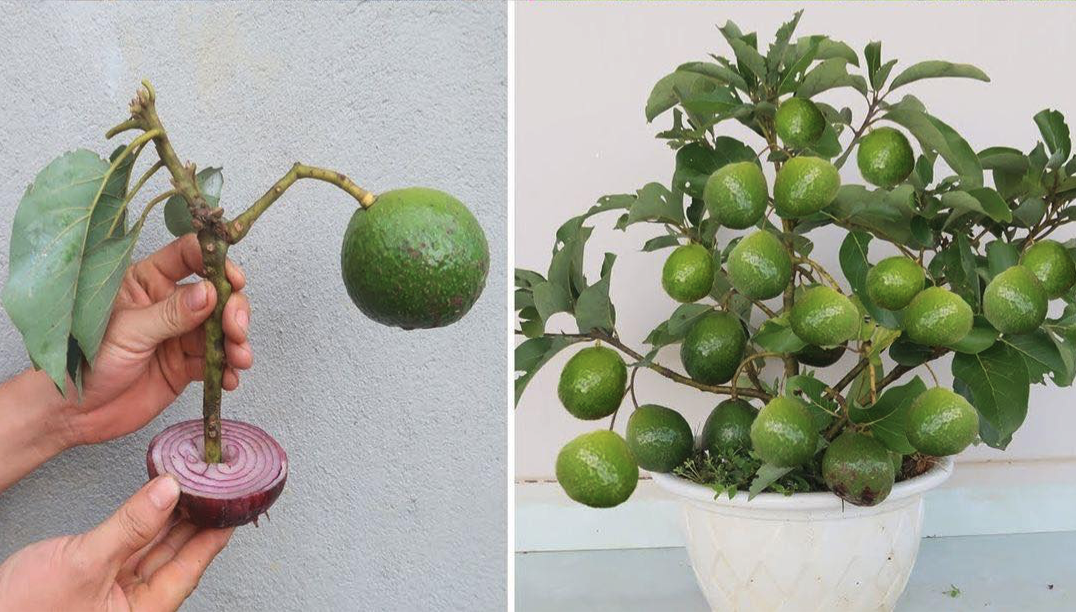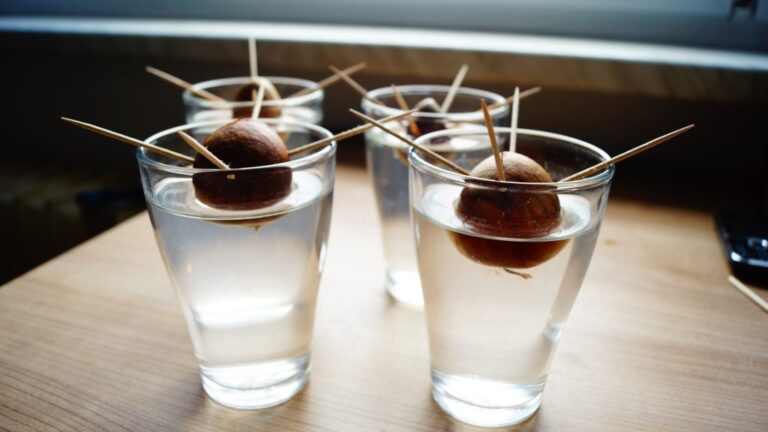6 Tips for Growing Avocado in a Pot and for it to bear fruit


Exploring the growth of an avocado seed at home can be a fascinating endeavor, whether it’s driven by curiosity or as part of a school experiment. While observing the seed’s transformation from a mere root to its first tender leaves can be an engaging process, cultivating an avocado tree to fruition demands infinite patience.
Avocado trees thrive best in tropical regions, benefiting from the warm climate necessary for their optimal growth. However, even in colder areas, it’s possible to cultivate these trees with proper shelter and protection from inclement weather and frost.
1. Mastering the Art of Germination
To initiate the germination process, it's crucial to thoroughly clean the avocado seed before carefully pricking it with four toothpicks. This allows for easy placement in a glass of water, with the pointed end facing upward. Regular water changes on a weekly basis are essential to prevent rotting, and after approximately three weeks, signs of germination should become evident. Springtime is particularly favorable for this phase. Once the seed sprouts its initial leaves, it's time to transfer it to a pot.

2. Potting Matters
In regions where temperatures frequently drop below 10ºC (50ºF), it is advisable to select a manageable pot that can be kept indoors. Avocado trees are highly susceptible to cold, so offering them warmth and protection is crucial. In tropical countries, larger pots can be utilized initially, with the option to gradually increase the pot size as the tree grows.

3. Creating an Optimal Growing Environment
Avocado trees thrive in acidic substrates with a pH level ranging from 5 to 7. To achieve this, a well-balanced mixture of peat, coconut fiber, and earthworm humus should be combined. Adding a few handfuls of perlite ensures proper aeration within the mixture. This not only creates an ideal pH environment but also prevents waterlogging, which can be detrimental to the plant's health.
See also: Accelerate Tomato Growth: Incorporate These 8 Ingredients for Rapid and Exceptional Results!
4. Essential Care Guidelines

Cold Protection: During colder periods, it’s crucial to move the plant indoors and position it near a well-lit window. Thermal blankets designed for outdoor use can also be employed to insulate the plant from the cold.
Heat Management: To shield the delicate leaves from scorching sunlight, a shading mesh can be utilized, creating a suitable environment for healthy growth.
Watering: Adequate drainage is essential for the pot, as it prevents water accumulation. Properly draining excess water is crucial, as the tips of the leaves may turn brown if the plant lacks sufficient hydration.
5. The Art of Fertilization
To support the tree’s growth and development, fertilization should take place during the warmer seasons, such as spring and summer when the plant is most active. Applying a layer of earthworm humus on the surface of the pot provides a nutrient-rich boost to the avocado tree.
6. Pruning for Success
When the avocado tree reaches approximately one year old and reaches a height of around 60 cm (24 inches), it is advisable to prune it. Pruning encourages branching, preventing the tree from growing solely in one direction and promoting a more desirable shape. It’s recommended to trim the tree until it reaches a height of 5 or 6 meters (16-20 feet). After pruning, the tree requires time to recover, during which new shoots will emerge, heralding further growth and vitality.
Embarking on the journey of cultivating an avocado tree from a seed is a rewarding and educational experience. By following these guidelines for germination, potting, creating an ideal growing environment, providing essential care, fertilization, and proper pruning, you’ll pave the way for a healthy and thriving avocado tree, eventually bearing the fruit of your labor.
Source: https://craftygoldenmom.com
DISCLAIMER: THIS WEBSITE DOES NOT PROVIDE MEDICAL ADVICE The information, including but not limited to, text, graphics, images and other material contained on this website are for informational purposes only. The purpose of this website is to promote broad consumer understanding and knowledge of various health topics. It is not intended to be a substitute for professional medical advice, diagnosis or treatment. Always seek the advice of your physician or other qualified health care provider with any questions you may have regarding a medical condition or treatment and before undertaking a new health care regimen, and never disregard professional medical advice or delay in seeking it because of something you have read on this website.
